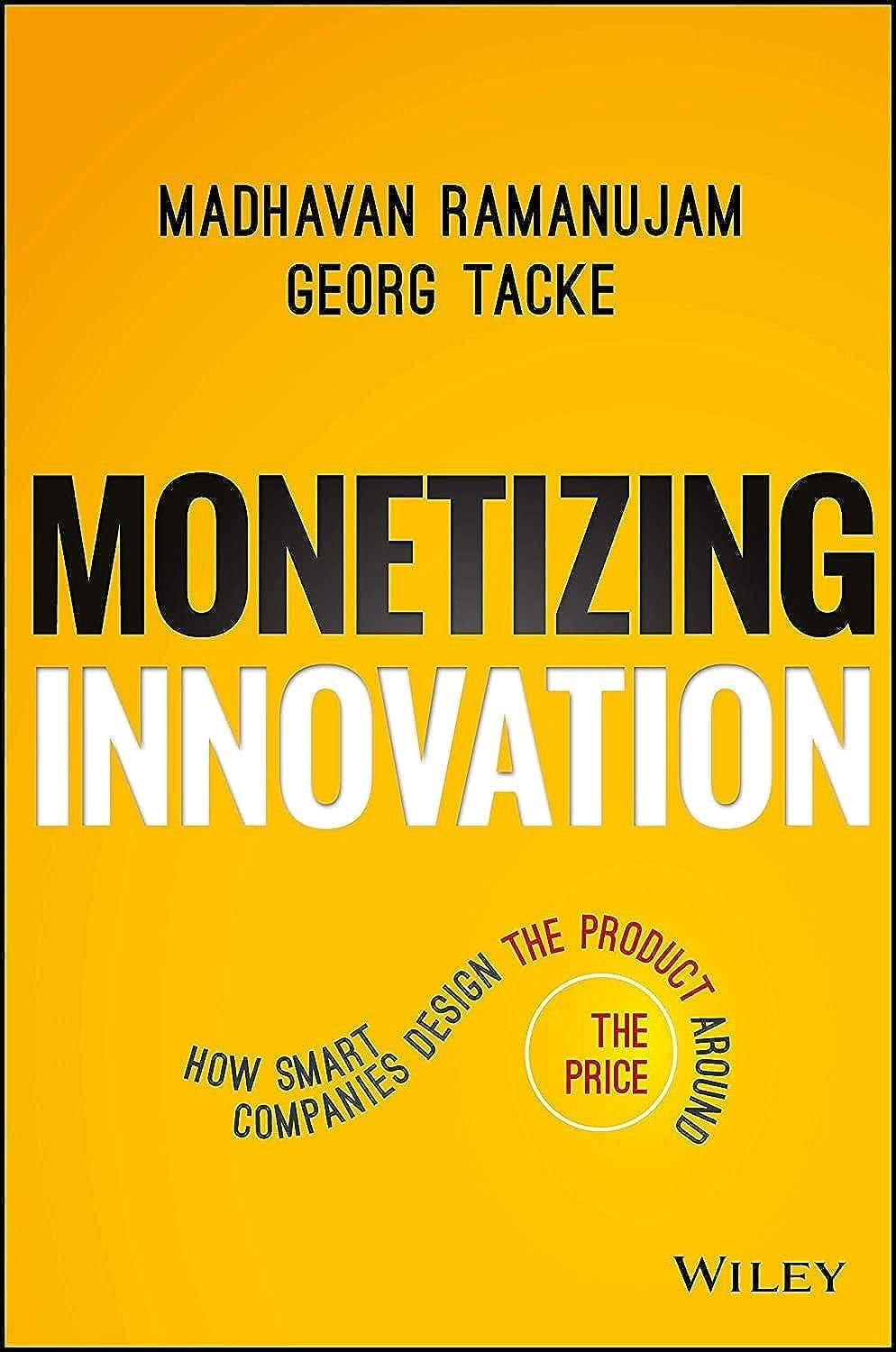One thing about me – if I’m ever trying to learn something new, my first instinct is to check if there are good books available on the topic.
Case in point, I once read: “How to Buy a House in California” and I would recommend (the book anyway; the decision is between you and god). I’ve also been diligently documenting my 2023 reading journey, if you’re interested.
In general, my mindset is that I’d rather know about all the things I don’t know before I take on anything of major significance rather than be caught entirely by surprise. When I had to prep for some pricing-related stuff at work, a recommendation from a mentor led me to the book “Monetizing Innovation”.
I’m not entirely convinced by the essential premise of the book. I get the authors’ point that “build and they will come” is not a strategy for success but “price correctly and they will come” isn’t either. The overarching message which I do completely agree with however is the importance of understanding your users and their motivations before building a product. Price sensitivity and willingness-to-pay is a part of user research that I don’t think tech companies (at least software) pay enough attention to.
If you’ve taken business-y courses, some parts of the book might be more familiar (conjoint analyses, price elasticity curves) but overall, it was a good refresher. The book’s author Madhavan Ramanujam summarizes the book in this First Round blog post (seriously, every business book could/should just be a blog post) but here’s a few observations from that book that struck me as relevant from an enterprise software lens.
- Think of price as a function of value to the customer. If you deliver more value, you can charge more for that value. I love the pay-as-you-go model since it’s the most literal interpretation of value-to-price
- I’ve learnt how to do user research (aka don’t ask leading questions, design statistically significant surveys etc.) but there are frameworks for how to glean “willingness to pay” from customers I’ve never used in practice
- User segmentation is a mix of art and science; but I’ve realized that doing it on the basis of any specific characteristic like demographics, geography, size or stage of company is likely not going to result in useful insights for product development. The most successful segmentation I’ve personally done has been based on customer needs and what they value most
- If you only segment customers when you’re trying to sell a finished product to them, it’s probably too late. This also ties in with a contentious (but I think valid) point that the book makes; you should ideally have the same customer segments across the company i.e. engineering, product, sales, marketing, finance, should all be operating with the same segmentation scheme
- Maybe this rule of thumb is common knowledge but it was news to me. There is a common bundling/packaging model we see in software called ”good, better, and best”. For instance: Dropbox offers Plus, Essentials, Business and Business Plus tiers. Only ~25% of customers should opt-in to the “good” option with the bulk of your customers purchasing “better” and “best”. Don’t give away too much for cheap
- I like the idea of a living pricing strategy document that give teams autonomy while staying true to the company’s strategic goals. Per the book, a good framework for this document might be
- set clear goals and prioritize among conflicting goals (ex. maximize revenue or maximize profit or maximize usage)
- pick a pricing strategy (maximization, skimming or penetration)
- set price-setting principles to define rules for monetization
- define promotional and competitive reaction principles to avoid knee-jerk reactions
- Communicate product benefits to users and not product features. This becomes a lot easier to do if sales and marketing teams are involved early in the product development processes
- Deal deconstructions i.e. dissecting reasons why the company is winning and losing deals is super interesting to me. I think this process is often far-removed from product teams, which means key insights could be lost along the way. What we might think is a pricing issue could actually be a value issue or vice versa
If you’re actively working on or thinking about pricing strategies, this book is a quick and easy read! I appreciated how tangible all the content was but I also wished it was a little less formulaic. Lenny Rachitsky also interviewed the author on his podcast for folks who prefer that medium.
If you’ve read the book or plan to read it, I’d love to know what you think!
